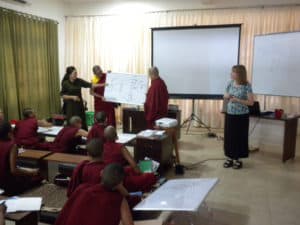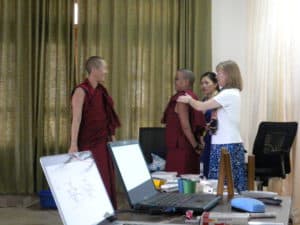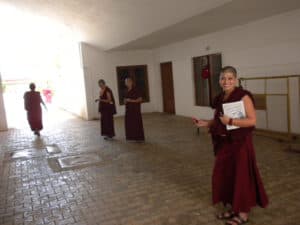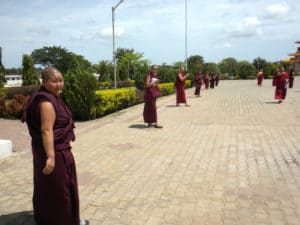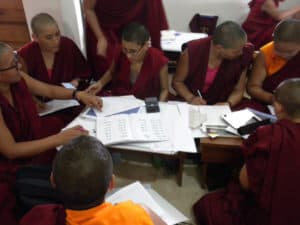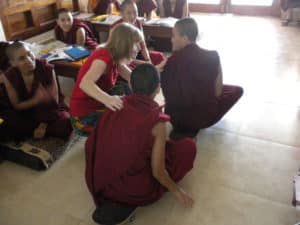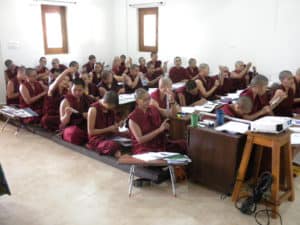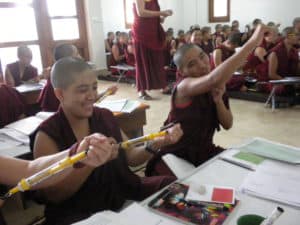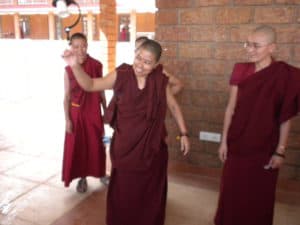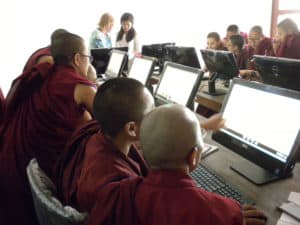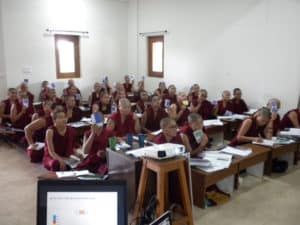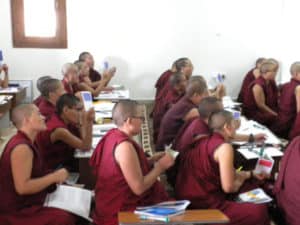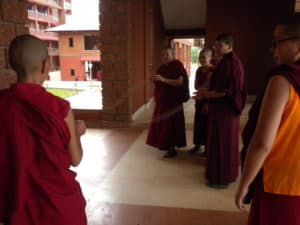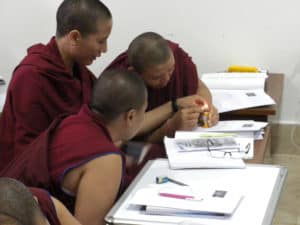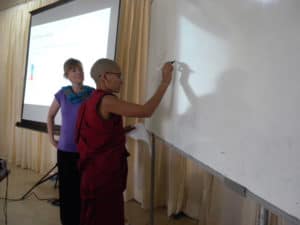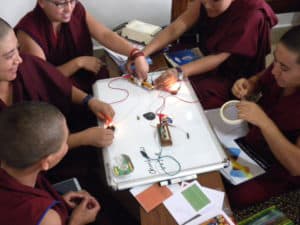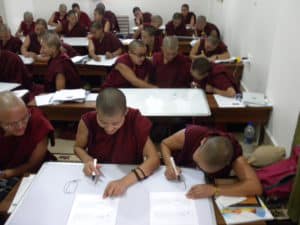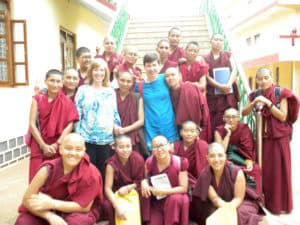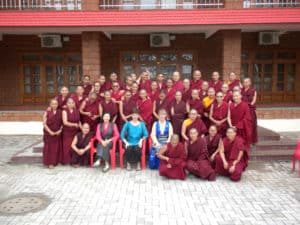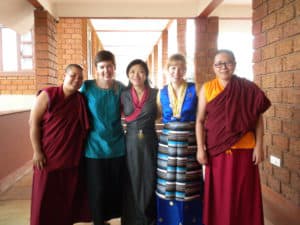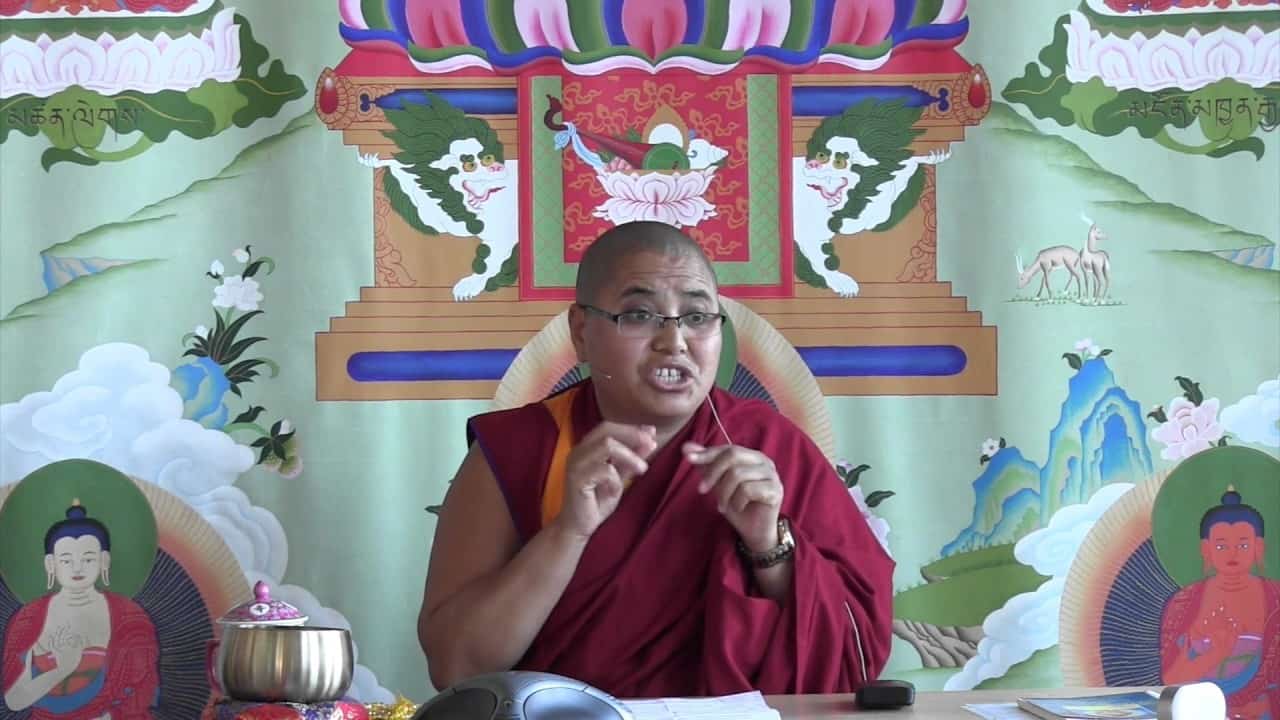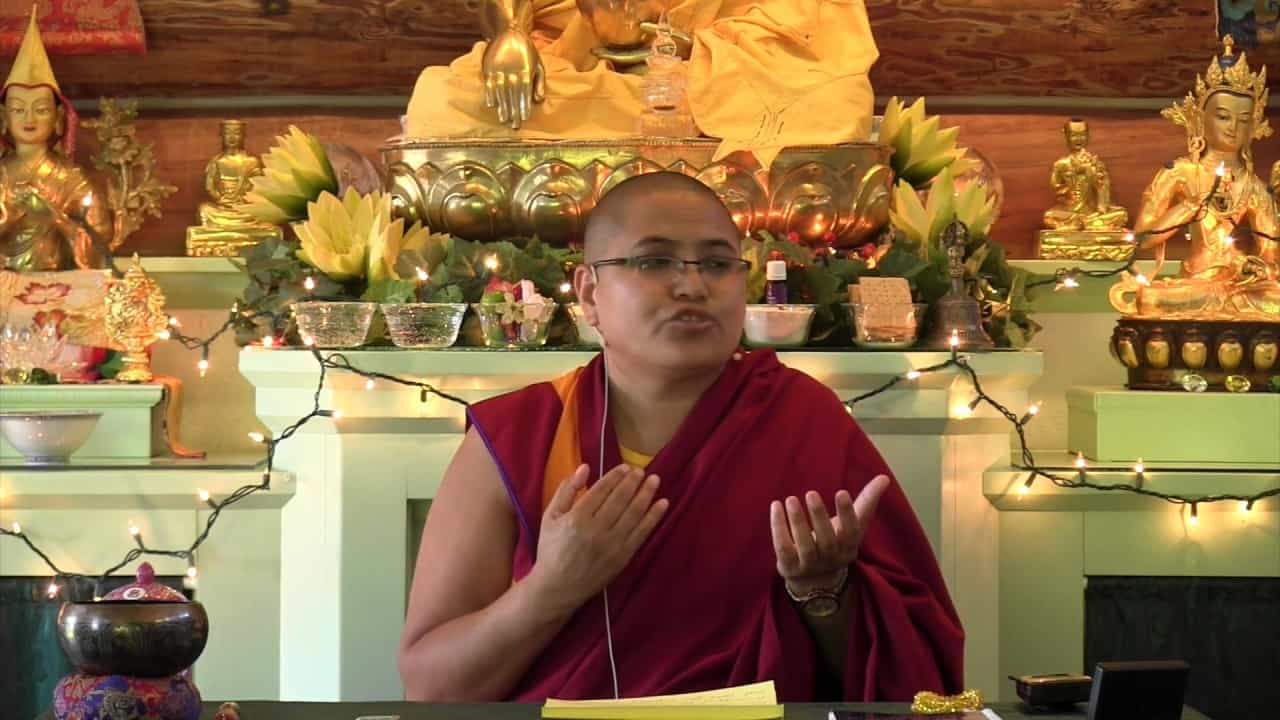Connecting women scientists and Buddhist nuns
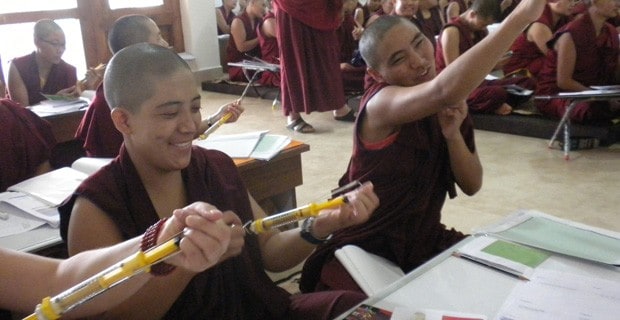
Learn more about the Robert A. Paul Emory-Tibet Science Initiative on their website.
At the 2016 Emory-Tibet Symposium on “Bridging Science and Buddhism for Mutual Enrichment” held at Drepung Monastery in South India, Venerable Chodron met Dr. Nicole Ackerman, an enthusiastic young Assistant Professor of Physics at Agnes Scott College. Nicole was part of the Emory-Tibet Science Initiative teaching science to monks through summer intensive courses in India, but she wondered, “What about the nuns?”
Coincidentally, Venerable Chodron had been asked to give a talk to the nuns at Jangchub Choeling Nunnery outside the symposium program, so she invited Nicole to come along. Word spread amongst the women scientists, and a group of four scientists (with two partners in tow) joined Venerable Chodron’s visit to Jangchub Choeling Nunnery, sharing ideas over dinner on how to bring more nuns into the science program, before attending Venerable Chodron’s Dharma talk.
A year later, Venerable Chodron was delighted to receive an update from Nicole about the physics class for nuns she that she co-taught with Dr. Heidi Manning at the Drepung Loseling Science and Meditation Center through the Emory-Tibet Science Initiative:
41 hard working nuns from five different nunneries enthusiastically completed the class activities, consistently asked good questions, and helped each other understand the physics topics that we covered. The average on the test was 81%. While the test changes from year to year, this is a much higher average than the monks typically earn on their physics tests! We were told that the nuns’ average on the philosophy test was higher than any class of monks.
The year one physics curriculum is an overview of a number of physics topics, while future years will go in to more depth on each topic. I hope that the nuns all have the opportunity to continue in the program so that they deepen their knowledge. Based on their questions, they were trying to form connections between their Buddhist studies and what they were learning in physics. I am sure they will think of many questions over the next year!
It was an incredible experience for me, and I hope that I have the opportunity to return and teach in the future. Their questions always show me that I can improve my understanding of physics—the monks and nuns catch places where my terminology or logic is sloppy! Many people asked about the differences between teaching the monks and nuns: I found the nuns to be much more engaged! More of the nuns spoke some English and they were much less shy. It was wonderful to be able to talk to them and work with them directly.
Nicole also sent photos that she kindly gave permission to post below. This is the first year that a full class of nuns has attended the science program, and their passion for learning shows. May this exchange between scientists and monastics continue to deepen and grow, for their mutual benefit and for the benefit of humanity!
First topics: light and shadow, phases of the moon
Measuring speed with stopwatches, making a table, making a plot.
Two skateboards: Newton’s 3rd law!
Spring scales for measuring forces and exploring Newton’s laws. A fun demo showing that circular motion can happen even when our intuition says things will fall.
In the computer lab, everyone explored the structure of atoms using a simulation.
Telescope night at Jangchub Choeling – the clouds were sometimes in the way, but everyone saw the moon, Jupiter, and the moons of Jupiter.
Response sheets ensure that everyone participates and the instructors know how many people are confused.
One day was spent on circuits and Ohm’s law – everyone made some impressive circuits out of batteries, switches, and light bulbs. Much creativity was on display!
Venerable Thubten Rinchen
Ven. Thubten Rinchen met the Dharma at Drepung Loseling Monastery in India in 2015, and then studied and practiced at Drepung Loseling center in Atlanta, where she took refuge with Geshe Dadul Namgyal. She met Ven. Thubten Chodron during a trip to India in 2016 and was able to first visit Sravasti Abbey in 2017. After another short winter visit, she was able to spend much of the summer of 2019 at the Abbey, including attending the Exploring Monastic Life program. While Ven. Rinchen initially put her monastic aspirations on hold for opportunities in Atlanta and India, the COVID pandemic provided a helpful reminder about the impermanent and unsatisfactory nature of samsara. She moved to Sravasti Abbey in August of 2020 and began anagarika training in October of that year. After a fruitful discernment period, she requested ordination and received her shikshamana ordination at the Abbey from Venerable Chodron in August of 2021. She received bhikshini ordination at Fo En Si Temple in Taiwan in March 2024. Prior to coming to the Abbey, Ven. Rinchen was involved in the Emory-Tibet Science Initiative, which provided many opportunities to travel to the Tibetan Monasteries in India to teach physics to monks and nuns, which she did every summer from 2015 to 2019. She taught physics at a college in Atlanta, and performed research in medical physics. At the Abbey, Ven. Rinchen is part of the finance team, facilitates SAFE, assists with IT, and keeps the website running. She also enjoys caring for the kitties, tending the vegetable garden, studying Tibetan, and cooking Indian food.

